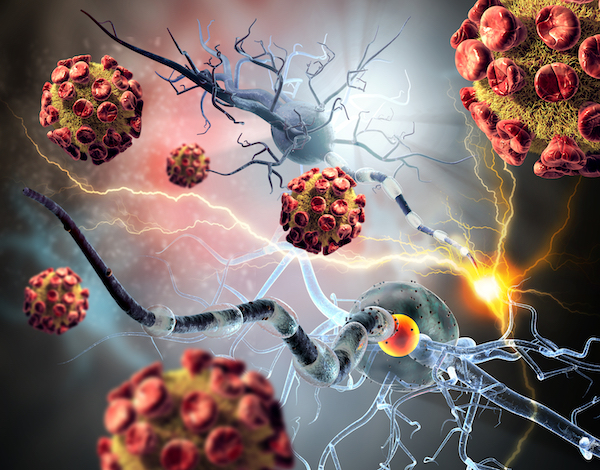Autoimmune Diseases

Autoimmune diseases develop from an imbalance within the immune system, leading to the body failing to distinguish self from non-self1 and, ultimately, immune cells attacking their host.2 They are frequently chronic conditions that can occur at any age – depending on the disorder1 – and can be either systemic or tissue specific.2 There are almost 100 different specific diseases,1 including type 1 diabetes – the most prevalent – rheumatoid arthritis (RA), multiple sclerosis, inflammatory bowel disease (IBD), and psoriasis.
Mechanisms of Autoimmune Diseases
Autoimmune diseases are thought to be linked to defective control of self-reactive T cells.1 These cells are constantly being produced in the thymus of healthy individuals, and are normally eliminated before reaching maturity.1, 2 Their survival and proliferation in patients with autoimmune diseases contribute to tissue injury and clinical manifestation.3
Disease progression occurs through sequential phases, including initiation, propagation, and resolution.3 Initiation is typically subclinical, but propagation is characterized by inflammation due to cytokine production, epitope spreading, and an imbalance between effector T cells and regulatory T cells (Treg cells).3 This balance can be restored during the resolution phase, but patients often suffer long term due to a persistent struggle between effector and regulatory responses.3
Treatment Strategies
Traditional immunosuppressive medications act by globally dampening the immune response, and their efficacy means that they remain the ‘gold standard’ options for treatment.1 These agents, however, often carry severe side effects, and long-term use makes a patient highly susceptible to opportunistic infections and malignancies.1 More targeted strategies involve immunotherapies, which focus on either inhibiting pathogenic cells, or enhancing natural pathways to suppress them.1
Biological agents target key components of the immune system, and have transformed treatment possibilities.4 For example, TNF-α inhibitors have been routinely used to reduce inflammation in diseases including RA, IBD, and psoriasis.5 A subset of patients fail to respond or their treatment is discontinued because of adverse effects,3 leading to the research and development of novel strategies based on successful cancer immunotherapies.5 These methods target a narrower set of immune pathways or produce responses solely in the presence of tumor-associated antigens, thus they are now being adapted for treating autoimmune diseases.5
The essential role of Treg cells in autoimmune diseases is being explored in the development of several therapeutics. The most promising involves polyclonally expanded Treg cells that are transferred into patients with type 1 diabetes, cutaneous lupus erythematosus, or Crohn’s disease.6
Additional areas of interest include costimulatory blockade, antigen-specific immunotherapy, and IL-2 pathway manipulation, which all seek to help restore the balance of effector and regulatory immune function.1
Related Resources
References
1. Rosenblum MD, Gratz IK et al. (2012) Treating human autoimmunity: current practice and future prospects. Sci Transl Med.
2. Wang L, Wang FS et al. (2015) Human autoimmune diseases: a comprehensive update. J Intern Med. 278(4):369-395. doi:10.1111/joim.12395
3. Rosenblum MD, Remedios KA et al. (2015) Mechanisms of human autoimmunity. J Clin Invest.125(6):2228-2233. doi:10.1172/JCI78088
4. Her M, Kavanaugh A. (2016) Alterations in immune function with biologic therapies for autoimmune disease. J Allergy Clin Immunol. 137(1):19-27. doi:10.1016/j.jaci.2015.10.023
5. (2019) Immunotherapies for autoimmune diseases. Nat Biomed Eng. 3, 247. https://doi.org/10.1038/s41551-019-0394-3
6. Dominguez-Villar M, Hafler DA. (2018) Regulatory T cells in autoimmune disease. Nat Immunol. 19(7):665-673. doi:10.1038/s41590-018-0120-4

